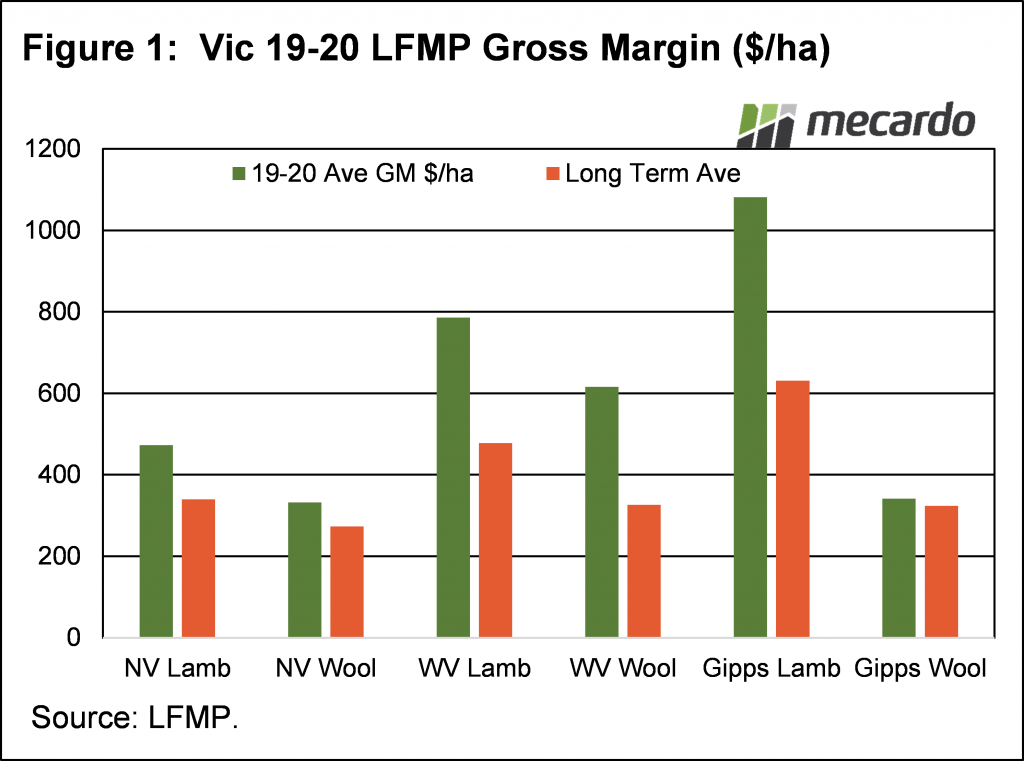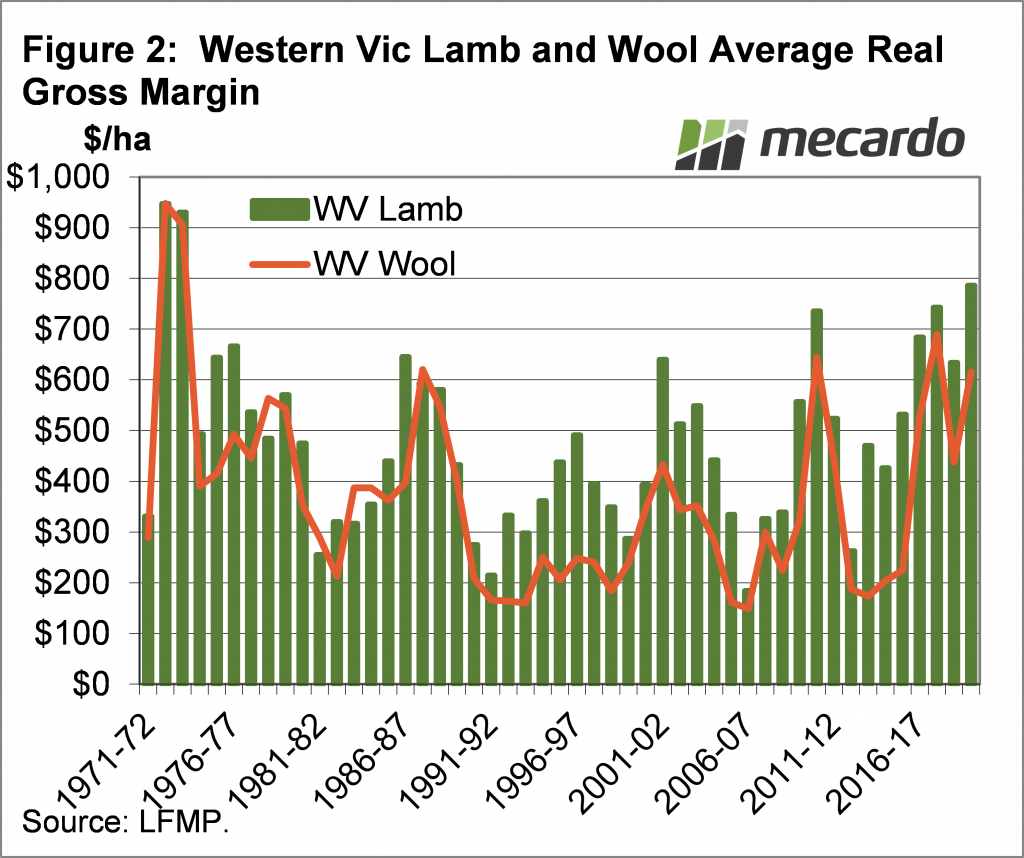The Agriculture Victoria Livestock Farm Monitor Project (LFMP) provides an annual insight into the profitability of Victorian Livestock Producers. The LFMP benchmarks a vast array of farm business data and allows regional and historical comparisons of livestock enterprise performance.
Seasonal conditions varied widely in 2019-20, and this is reflected in average gross margins for lamb and wool enterprises in Victoria. Parts of the state had very good years in terms of rainfall, while others, particularly East Gippsland, had very poor years.
Figure 1 shows that most of the Prime Lamb producers in Gippsland were likely in the good rainfall areas. Prime lamb in Gippsland was the most profitable enterprise based purely on gross margin per hectare. The sample size for prime lamb in Gippsland is relatively small, with 9 farms. Two of these farms had gross margins of $1838 and $2170 per hectare which dragged average gross margins higher.
Western Victorian woolgrowers were the most profitable, but still lagged behind their prime lamb counterparts. Average wool prices were down in 2019-20, at $10.67/kg greasy, which was a four-year low in real terms. Still, real wool prices were higher than any other time since 1990.
Lamb producers enjoyed yet another year of rising prices. In Western Victoria, the average lamb sale price was $167/head. This was 12% higher than 2018-19, and the fifth year of consecutive price rises.
The better lamb and sheepmeat prices helped Western Victorian woolgrowers defy lower wool value to post higher gross margins in 2019-20. Figure 2 shows how Prime Lamb businesses had their best gross margins since 1972-73, and wool it’s second best. Variable costs were slightly lower, but much of the increase in gross margins is due to higher lamb and sheepmeat prices.
The LFMP has been running for a shorter time in Gippsland and Northern Victoria, but the historical data is growing. Figure 3 shows both wool and lamb gross margins steady in Northern Victoria, while wool rallied in Gippsland, but nothing compared to prime lambs.
What does it mean?
With four consecutive years or much better than average gross margins, it’s little wonder land prices are trending up in Western Victoria. There is plenty of incentive to expand lamb at current prices. Weaker wool prices this year are likely to point towards further reductions in relative profitability, and further shrinking of wool flocks in Western Victoria.
In Northern Victoria wool is closer to lamb, and both have been better than average for the last four years. It’s hard to make comparisons in Gippsland, apart to say wool producers, especially in East Gippsland, have had the worst seasons, and highest costs, which impacts gross margins.
Have any questions or comments?
Key Points
- The Livestock Farm Monitor Project shows another good year for Victorian Sheep producers.
- Prime lamb gross margins continue to outstrip wool on a $/ha basis.
- High lamb and sheepmeat prices were largely responsible for better gross margins in 2019-20.
Click on figure to expand
Click on figure to expand
Click on figure to expand
Data sources: Agriculture Victoria, Mecardo














